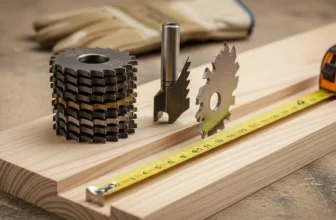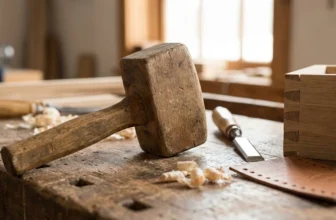What is Sapele Wood? All You Need to Know
The Sapele wood is, of course, a large wooden tree that has a wide range in Africa. It is quite common for a trunk to exceed 6 feet in diameter and has a straight box whose branches do not fall below 80 feet. It has a largely straight grain, bracelets, and tall wood at a great cost per trunk. With such large resources to harvest, it is easy to obtain large quantities of supplies throughout the year. This availability will keep the cost low and make you one of those you can rely on to make your plans permanently.
Sapele wood Specification

Common name (s): Sapele, Sapeli, Sapelli
Scientific name: Antandophagma cylindricum
Distribution: Tropical Africa
Tree burl size: 100-150 feet (30-45 meters) long, 3-5 feet (1-1.5 meters) trunk diameter
Average dry weight: 42 lbs / Fat 3 (670 kg / m3)
Specific gravity (basic, 12 mc): .50, .67
Whose hardness: 1,410 lbf (6,280 N)
Replacement modules: 15,930 lbs / in2 (109.9 MPa)
Flexible modules: 1,746,000 lbf / in2 (12.04 GPa)
Crushing power: 8,750 lbs / in2 (60.4 MPa)
The Sapele wood is, of course, a large wooden tree that has a wide range in Africa.
Origin of The Name Sapele
The name Sapele comes from the Nigerian city of Sapele, where this tree offers. African Timber and Plywood (AT&P), a division of the United Africa Company, had a factory where wood, as well as triplochiton scleroxylon, obscene, mahogany, and they, were transformed into wood. It was later exported from Sapele Port. Around the world
The name of the city itself is the Gospel of the word Arahubu and Eupel, reminiscent of a local deity. It is believed that the British colonial authorities change the name of the settlement to spill because it was easier to pronounce.
Sapele wood description
Entandrophragma cylindricum is native to Africa. Different countries have protected populations and decreasing restrictions.
The species grows to a height of 45 meters (rarely 60 meters). In the dry season, the leaves are tall, arrange alternately, in the pinnate, there are 9-9 pairs of leaflets, each leaf about 10 cm long. The flowers are produced in loose flowers when the tree is resistant, each flower about 5 mm in diameter, with five yellow petals. Its fruit is a capsule of rotation 10 cm long and 4 cm wide. When they ripen, the 15 to 15 seeds are divide into five parts.
Uses of Sapele wood
Commercially, this important wood reminds of mahogany and is part of the same Melissa family. It is deeply rooted in tone and has a distinct personality, usually where data is important. The Sapele are especially appreciated for a colorful lure that varies from light pink to brown and golden to red. It has a high density of 640 kg / m3 and interlocking grains, which can make machining a bit difficult. In recent years, the demand for Sapele as a substitute for mahogany has increased as real mahogany has become a species of Cites Annex II. It is used in furniture, carpentry, costumes, luxury apartments, and ship buildings.
One of its most exotic uses is in musical instruments. It is used for acoustic guitar bodies on the back and sides of acoustic guitar bodies as well. It is also used in the manufacture of eucalyptus neckpieces and threads of 26 and 36 threads. In the late 1990s, the txalaparta Basque percussion dashboard began to be used.
Color/Appearance of Sapele
The heartwood is golden brown to dark reddish-brown. The colors darken with age. In addition to the typical ribbon pattern seen in the Quarterson tables, the apple is also known for several other grain patterns, such as a knob, tissue, fabric, wavy, breast, and feedback.
Sapele Grain/Texture
The grain is interconnected, and sometimes it is wavy. Excellent uniform texture and good natural shine.
Endgrain Sapele
The spread is insecure large holes in certain arrangements some; 2-3 radiation regulation and isolation occasionally there are reddish-brown deposits. The spread of parenchyma accumulates, unilateral and minor; moderate narrow rays, normal spacing. The waves are present.
Sapele Capacity
The apple can cause problems in some machining operations (i.e. plating, routing, etc.), which causes its tearing due to the interlocking of the grains. When placed in direct contact with iron, it will also react and stain. The apple has a slight crack effect on the cutter, but it bends, sticks, and ends well.
Odor
The Sapele has a distinctive aroma of cedar while working.
Allergy / Poisoning
Although acute reactions are rare, it has been reported that the sepal is irritation of the skin and respiratory tract.
Price/availability of Sapele wood
As usual, the value of the wood of the flat area or of Quarterson should be moderate, although sleeping wood and linen can be very expensive, especially palm or quail Sapele.
Durability
This wood species is not included in the Cites supplement, but rather in the IUCN Red List.
Common uses of Sapele
veneers, plywood, furniture, cabinets, floors, boat building, musical instruments, convertible items, and other small wooden appliances.
Highly Stable Sapele Wood
One of the most common questions we hear is: “Is the reel a hardwood or a softwood?” This is usually because Sapele wood is known as an exterior wood and many good exterior kinds of wood are also softwood. The funny thing is that the definition of softwood wood and flora has nothing to do with how hard the wood is. But it is the structure of the tree and, in general, if it loses its leaves or not. The apple is technically a hardwood or a fallen tree. But it is also a hardwood to answer the common question when compared to certain species in North America, and much harder than common outdoor wood such as cedar and cypress.
Stability of Sapele wood
The wood of the bicycle is of medium hardness, of 1,510 pounds, and much harder than the domestic species of North America and twice as hard as real mahogany. In addition, the apple grows with an interconnected grain pattern where the fibers revolve around the tree as they grow. While the grain pattern is still moving in the same direction, the pattern that is between them cancels many of the movement that is commonly found in the grains. It makes Sapele wood very stable in terms of hardness and medium density, as well as straight cups (the main stress of the tree) and, therefore, can be estimated from the moment it is extracted from a drying oven.
It travels a long distance and is influence by the movement of wood from climate change to climate change. The high natural durability means that after the carpentry in this final project, the trip has very little waste and reliability.
Attractive Colors and Figures Of Sapele wood
Colors and figures of Sapele Wood
Sapele wood is often sold as a type of African mahogany. Somehow this is true since the Spiel Mahogany family is in Melissa. The problem here is that many species are lost under the name of African mahogany. Not everyone behaves well and varies dramatically in density, color, and stability. However, mahogany is comparing to exterior grade wood, which is reddish-brown.
The Sapele is often using as a material for windows and doors because it is very stable and almost completely rotten and weatherproof. The grain and texture structure is more rigid than real mahogany, so apples serve as an excellent substrate for painted surfaces. When weaving in rooms, the grain pattern that lies between the forms the beautiful strip of tape that is often seen on the door panels and plywood sinatas. The Quarters on apple is amazing both in appearance and produces a beautiful and attractive product.
Sapele Is Highly Sustainable And Verifiable
Unfortunately, like many wood species that are “discover” and become famous, excessive extract can be a problem. Most of West Africa suffers from this problem and the spill is still healing. Due to greater awareness and strict control, the results are recovering well. Sierra Leone has planted plants like Ivory Coast. Congo is one of Sabel’s largest producers and as long as the area is subject to political turmoil, timber companies have adopted strict standards and verification schemes such as TLTV and VLO.
We buy all our supplies from TLTV stocks, which shows us that the tree has been responsible cut from a durable area, which demonstrates documents and verifiable chains. When it comes to legislation such as the Lucy Law, of course, our clients have peace of mind, but the level of detail also ensures that the buyer knows what he is getting. African mahogany is often assembling so that many species can exist in a single shipment. Without careful purchase and documentation, one is finding many species that do not necessarily work as well as supplements.
What is Sapele Wood
Definitely, the African mahogany cream is like hardwood in performance, durability, and appearance. We believe that when other industries begin to understand their capabilities, popularity will continue to grow. We rely so much on the fact that at any time you will find between 400 and 600,000 board feet of stock in our yard with a constant flow of incoming stocks that are carefully dry and ready for sale in North America. If you are buying supply wood from Jay Gibson MacIlline or another supplier, pay close attention to the source documents to make sure you are really competing for Sapele with other similar species.
It may surprise you how often it is rejected. More important, legal and stability documents are added to warn where the tree came from. The CPL is a valuable resource and we must continue treating it so that it is not difficult to obtain the most popular nature, which results in questionable research methods. Always buy apple wood from a dealer who understands the offer, as well as the method of drying and grinding. Focusing on this detail will keep good suppliers, importers, and merchants in the business and will only work to close the market to those who misuse it.
Tags: Sapele Woodwood
Hi, I’m Charles Larson. We do everything we can to support our readers with hundreds of hours of research and comparison testing to ensure you find the perfect tool for your workshop.








